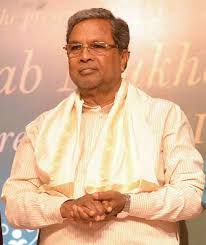When Siddaramaiah returned to the Chief Minister’s chair in May 2023, it wasn’t just a political comeback. It was a veteran leader stepping back into the arena to prove that the legacy he built between 2013 and 2018 was no accident — that the people chose him then, and he could still command Karnataka’s political terrain on his own terms.
A decade ago, Siddaramaiah governed like a man with nothing to lose. Today, he governs like a man with everything at stake: his legacy, his authority, and his place in Karnataka’s political history. Whether he rises above the turbulence of this second term or gets pulled down by it will determine how Karnataka remembers him — as the chief minister who delivered on people’s expectations, or the chief minister who almost did.

His first full term (2013–18) was marked by stability, steady welfare expansion, and an AHINDA consolidation that gave him a clear political identity. He completed a full five-year term — the first since Devaraj Urs — earning a stature few Karnataka leaders enjoy. There were no major scandals, little public dissent, and governance ran predictably under a leader who had everything to gain.
But the second innings have been far more complicated. The same leader, the same party, even the same conviction — yet a government that appears constantly on the defensive, weighed down by internal power struggles and self-inflicted wounds. Ministers, MLAs and leaders from within the party often admit that while the government has delivered on welfare, crisis management and perception-building have complicated its narrative.
A minister defending the government remarked, “Don’t compare two regimes. Each day and year is a learning curve. Despite certain crises, Siddaramaiah-ji’s leadership has ensured every promise made during the elections has been fulfilled.”
But the contrast is undeniable. If the first term was about building a legacy, the second is about protecting it.
Congress has repeatedly witnessed internal tremors — factional flare-ups that could have been handled early, according to party insiders. The persistent shadow of a power-sharing arrangement with DK Shivakumar has haunted the government, leaving MLAs publicly speculating about leadership changes and giving the Opposition ample ammunition.
The five guarantee schemes, Congress’ biggest electoral weapon, cut across caste and class lines and helped the party expand its appeal in other states too. But they also became the government’s perceived Achilles’ heel, with the Opposition accusing it of draining finances, stalling development and starving departments of funds.
In Siddaramaiah’s earlier term, no one questioned his authority. Today, he often emphasizes that he will complete a full five-year term “if the high command permits” — a line that exposes the fragile political tightrope he walks. His ambition to match Devaraj Urs’ tenure is an open secret, but his second term feels like a constant battle to keep that dream alive.
The administration too has struggled. Bureaucratic delays, pending tenders, Bengaluru’s civic issues, farmer protests, and procurement controversies have fueled criticism that governance has slipped into a reactionary mode. Add to this the scandals — the Valmiki Corporation embezzlement, the MUDA allotment issue, allegations of commissions — and the government’s “clean governance” plank has taken visible hits.
Yet, this is not entirely a story of decline.
Siddaramaiah has shown the same boldness that defined his first term. Reviving the caste census — a politically explosive project — required conviction that only a leader rooted in backward-class politics could demonstrate. Just as the AHINDA philosophy reshaped Karnataka’s social coalitions a decade ago, the caste census promises to redefine political equations once it is tabled.
But the overarching image of this second term remains a government engaged in constant firefighting — from potholes to price hikes, from leadership speculation to internal dissent. The confident, battle-hardened chief minister of 2013–18 has returned as a leader navigating a forced partnership and trying to stretch his political longevity.
Whether Siddaramaiah’s legacy emerges strengthened or strained will depend on how he steers the remainder of his term — and how he balances the demands of power with the urgency of performance.

